
Making your own homemade beef stock is a great way to add rich, complex flavors to soups, sauces, gravies, and more. Not only does it have amazing flavor, but it's cheaper and better for you than store-bought versions.
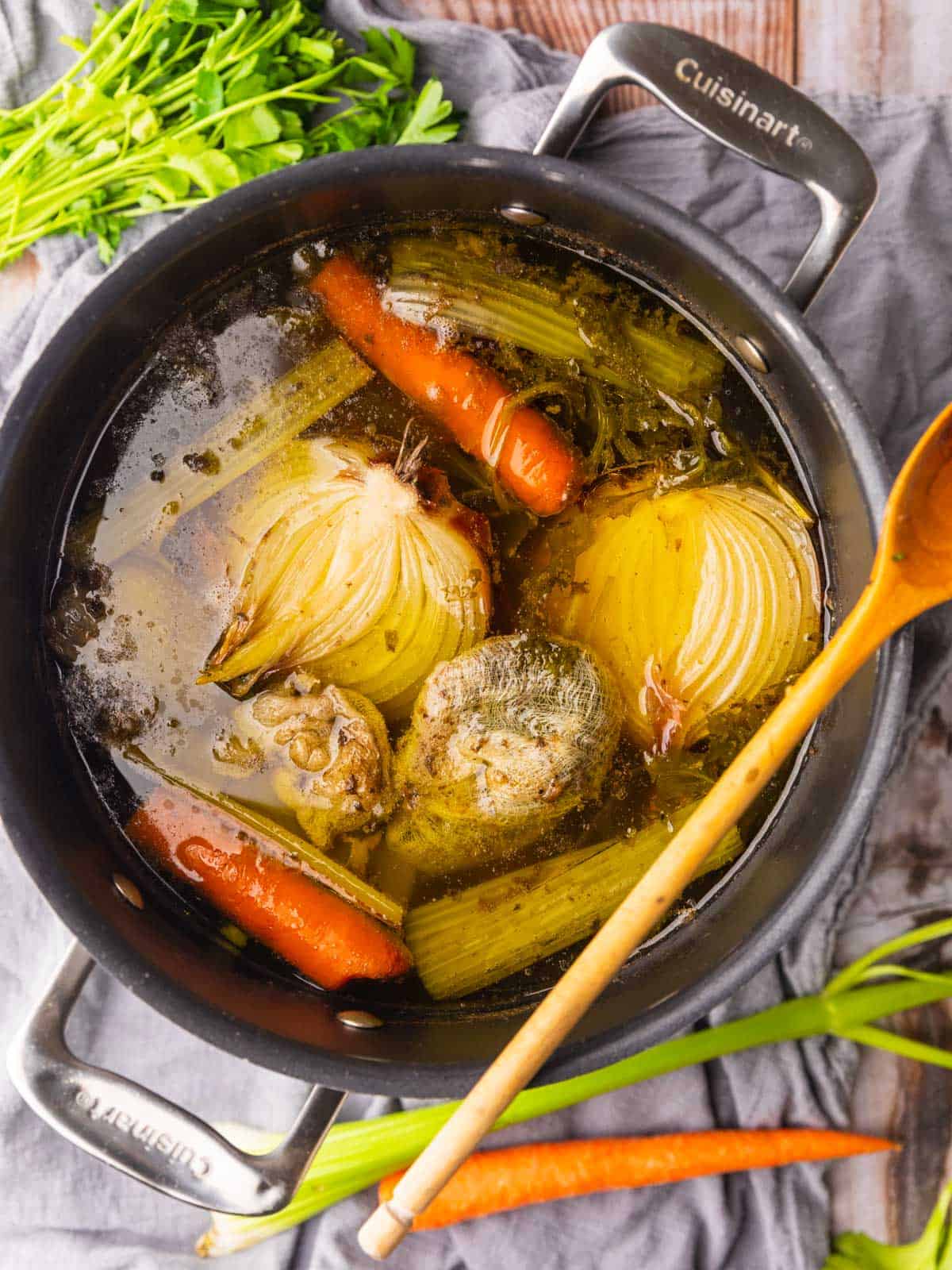
Jump to:
💭 What is the difference between beef stock and beef broth?
Beef stock and beef broth are very similar but the difference lies in the ingredients used. Stock is made by simmering bones in water with vegetables and herbs to create a rich, flavorful liquid. Beef broth on the other hand simmers meat instead of bones. It tends to be a bit thinner with a less complex flavor.
🍲 Making homemade beef stock
Making your own homemade stock can seem like a pain. After all, isn't it easier to just buy it from the grocery store? It definitely is quicker just to buy store-bought stock, however, the taste is unmatched. Follow these easy step-by-step instructions to have a super flavor liquid that can be added to many of your dishes.
It does take time to make my own stocks, so for that reason, I like making them in large quantities to freeze for later use. This makes it easy when it comes time to make a recipe and the additional flavor is definitely worth the effort up front.
🍖 Ingredient notes
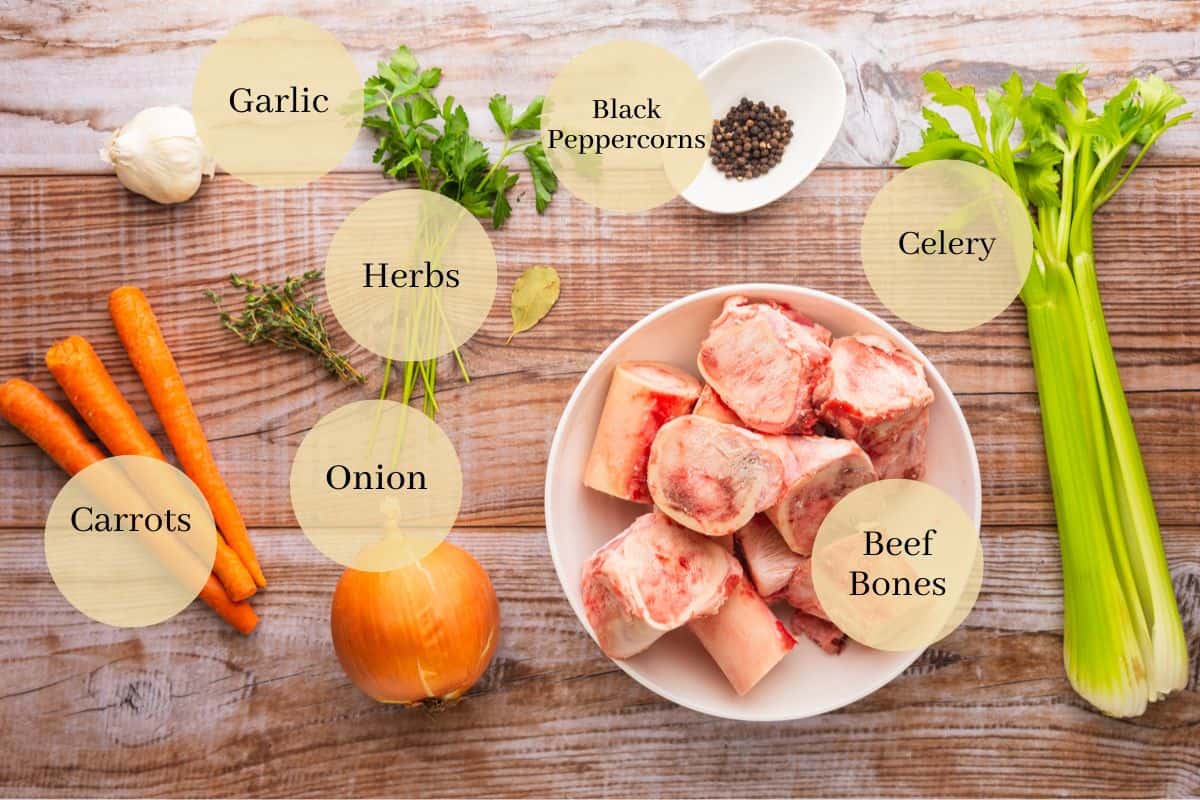
- Bones - The key ingredient in a rich beef stock is bones. Check with your local butcher or local grocery store to see what they have available. Knuckle bones, joint bones, neck bones or marrow bones are all great options to use. If you have leftover bones from a cut of beef that you prepared, that can be saved for use in stock. Some stores or butcher shops will also sell "soup bones". These are leftover bones from butchering meat and would add great flavor to your stock. Look for meaty bones if you can so you get the flavor from both the bones and the beef meat.
- Vegetables - A classic mirepoix is traditional when making a basic beef stock or beef broth. A mirepoix is a mixture of onions, carrots and celery and adds a great flavor base. Add leeks, shallots, garlic or mushrooms for more flavor.
- Herbs & Seasoning - Fresh herbs tied in cheesecloth is a great way to flavor the stock. Customize the sachet packet to adjust the flavor of the stock to your liking. My recipe includes a mix of parsley, thyme, bay leaves and whole peppercorns.
📋 Substitutions and variations
- For an even richer brown stock, roast the beef bones in a large roasting pan in a hot oven until well browned. Add them to a large pot of water to simmer. While the stock is simmering, brown the vegetables in the same pan with a little bit of olive oil on the stovetop. Once browned, add them to the pot of stock and then deglaze the pan with a bit of water. Scrape the bottom of the pan to remove any browned bits and add it and the liquid to the pot. Follow the directions for simmering the stock as directed below.
- Customize the herbs to your liking. For a more earthy stock, add herbs like rosemary and sage. For more spice, add whole cloves or allspice berries to the herb packet. Add your favorite chiles or peppers for a spicy beef stock.
🔪 Step by step instructions
First, add the beef bones to the bottom of a large stock pot and cover them with cold water.
Bring the mixture to a boil over medium high heat, then reduce the temperature to medium low. Let the bones simmer for 1 hour, skimming the scum off of the top with a sieve or slotted spoon occasionally.
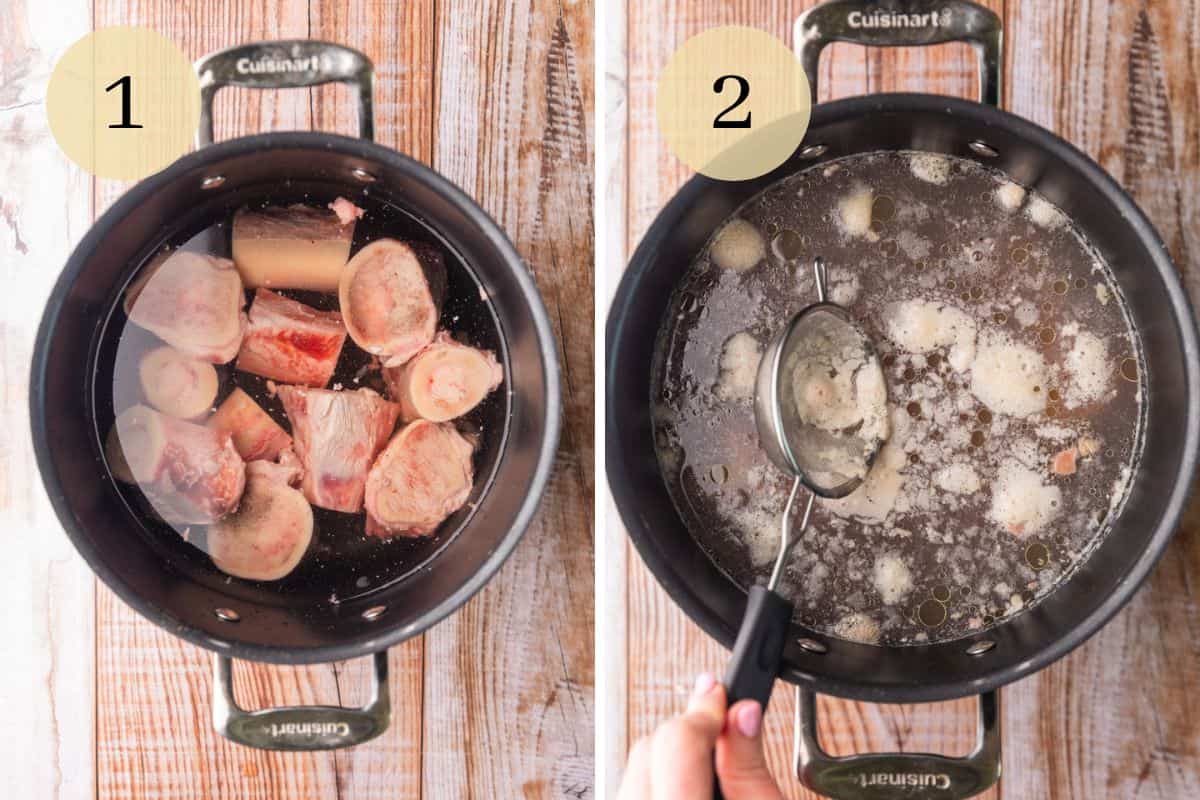
While the bones are simmering, cut the vegetables up in large pieces and crush the garlic.
In a piece of cheesecloth, add the crushed garlic, parsley, thyme, bay leaf, and whole peppercorns. Tie them up in a little bundle with cooking twine and place them in the pot with the bones, water, and cut up vegetables.
Allow the stock to simmer slowly, partially covered, for 4-6 hours. Add extra water and skim the top as necessary.
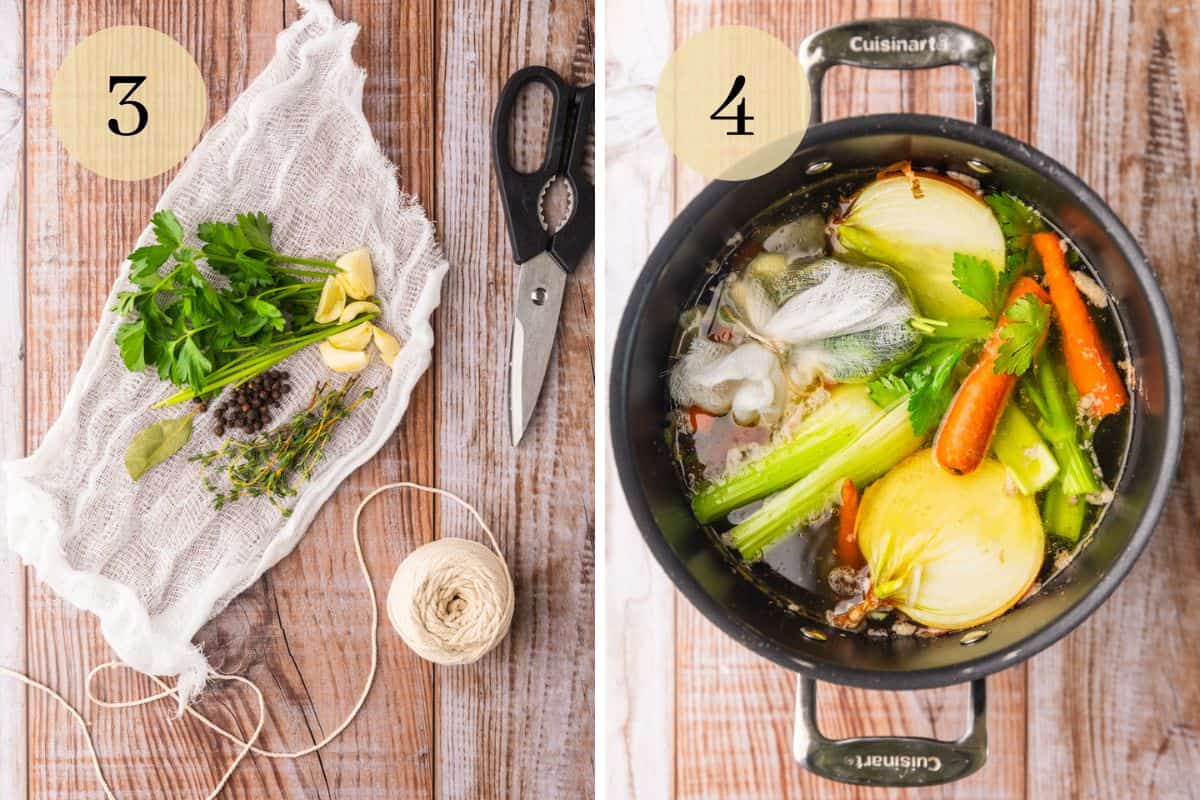
Strain the entire batch of liquid through a fine-mesh strainer or colander. Use cheesecloth for a clearer stock.
Then, allow it to cool completely in the refrigerator. Store homemade beef stock in freezer safe bags or containers or use immediately.

If you ever don't recognize a tool or skill that I mention, be sure to look it up in the Glossary of Cooking Terms and Definitions for more information.
⭐ Expert tips
- A 8-12 quart stock pot should be large enough for this recipe and should yield about 1 gallon of stock at the end.
- Keep the stock partially covered during simmering so it doesn't evaporate too quickly. Add more water as necessary so the bones and veggies are covered at all times.
- Make sure to skim the top of the beef stock every so often and strain it at the end. This will make a clearer stock and will also make sure to avoid an unwanted flavor or texture to your stock.
- Don't let the stock boil or it will create a lot of impurities.
- It's best to try and cool the stock quickly after cooking. This will avoid it sitting at an unsafe temperature which could cause harmful bacteria to grow. If you have a large batch, pouring it into smaller containers will help it cool faster in the refrigerator.
💭Frequently asked questions
For the most part, stocks and broths can be used interchangeably. If you don’t have homemade beef stock, beef broth, chicken stock or vegetable broth can be used. You can also use bouillon cubes or paste.
🥡 Storage instructions
This homemade beef stock will keep in an airtight container for 2-3 days in the refrigerator and up to 6 months in the freezer. Make sure to always cool it completely after cooling before storing it.
This stock can be stored in freezer-safe bags, deli containers, or even ice cube trays. I like to portion mine out in 2-4 cup quantities since that is the typical amount of stock I use for recipes.
🍲 Recipes to use homemade beef stock
Now that you have this rich, flavorful homemade beef stock recipe, here are some recipes that you can use it in.
Recipe
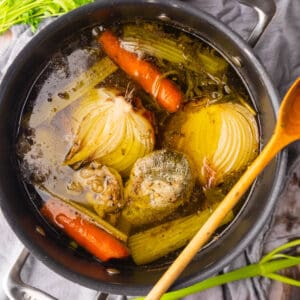
Homemade Beef Stock
Ingredients
- 3-5 pounds beef bones, Knucklebones, joint bones, neck bones, or marrow bones
- cold water
- 1 large yellow onion
- 3 large carrots
- 3 large celery stalks
- 4 garlic cloves
- 1 small bunch fresh parsley
- 1 small bunch fresh thyme
- 1 whole bay leaf
- ½ teaspoon whole black peppercorns
Instructions
- Add the bones to a large stock pot and cover them with cold water.
- Bring the water to a boil over medium high heat and then reduce to medium low. Let the bones simmer for 1 hour, skimming any scum off the surface with a sieve or slotted spoon.
- While the bones are simmering, chop the onions, carrots and celery into large pieces and crush the garlic cloves.
- Place the crushed garlic cloves in a large piece of cheesecloth along with the parsley, thyme, bay leaf and peppercorns. Tie the cloth up in a bundle and secure using cooking twine.
- After the 1 hour simmer time, add the herb bundle along with the cut up vegetables to the pot.
- Let the stock simmer, partially covered, for an additional 5 hours, skimming the top and adding more water as needed.
- Strain finished stock through a colander or fine mesh sieve to remove the vegetables, herb bundle, bones and any impurities.
- Cool the stock completely in the refrigerator and use immediately or store for later use. See storage instructions below.
Notes
-
- Use a 8-12 quart stock pot. Recipe should yield about 1 gallon of stock.
-
- Keep pot partially covered during simmering so it doesn't evaporate too quickly. Add more water as necessary so everything is covered.
-
- Skim the top every so often and strain it at the end. This will make a clearer stock and avoid unwanted flavor or texture.
-
- Cool the stock quickly after cooking to avoid harmful bacteria growth. A large batch of stock can be poured into smaller containers to cool faster.
Substitutions and Variations
-
- Vegetables - Add leeks, shallots or mushrooms for more flavor.
- Herbs & Seasoning - For a more earthy stock, add herbs like rosemary and sage. For more spice, add whole cloves or allspice berries to the herb packet. Add chiles or peppers for a spicy beef stock.
- Richer Stock - Roast bones in a large roasting pan until well browned. Add to the pot, cover with cold water and begin simmering. While the stock is simmering, brown the vegetables in the same pan with a little bit of olive oil on the stovetop. Once browned, add them to the pot of stock and deglaze with a bit of water. Scrape the bottom of the pan to remove any browned bits and add it and the liquid to the pot. Follow remaining directions for simmering.

 By
By 
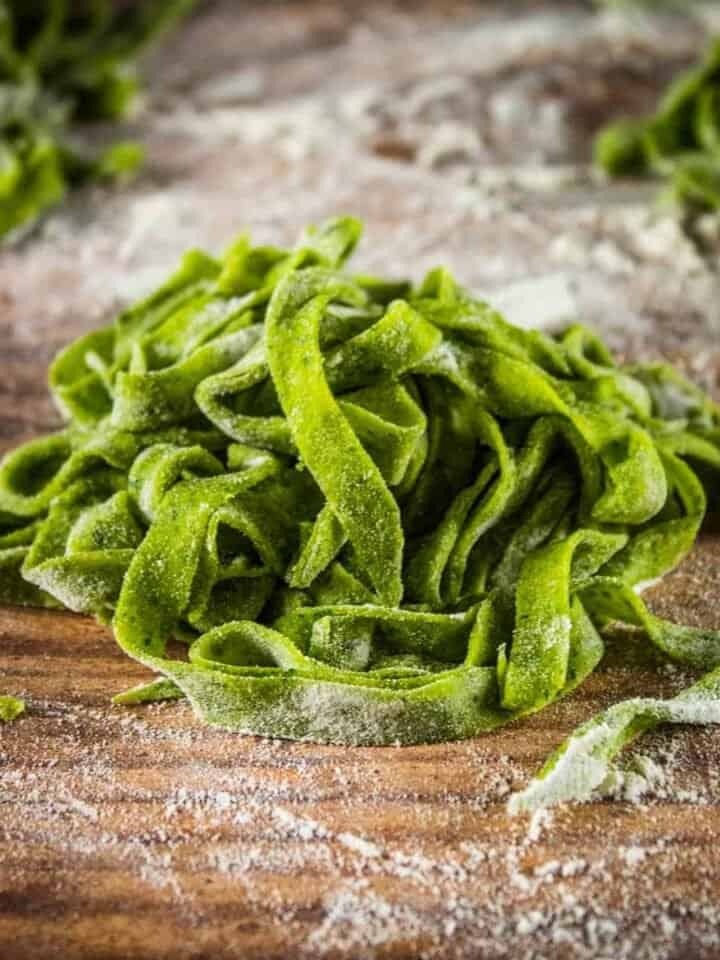
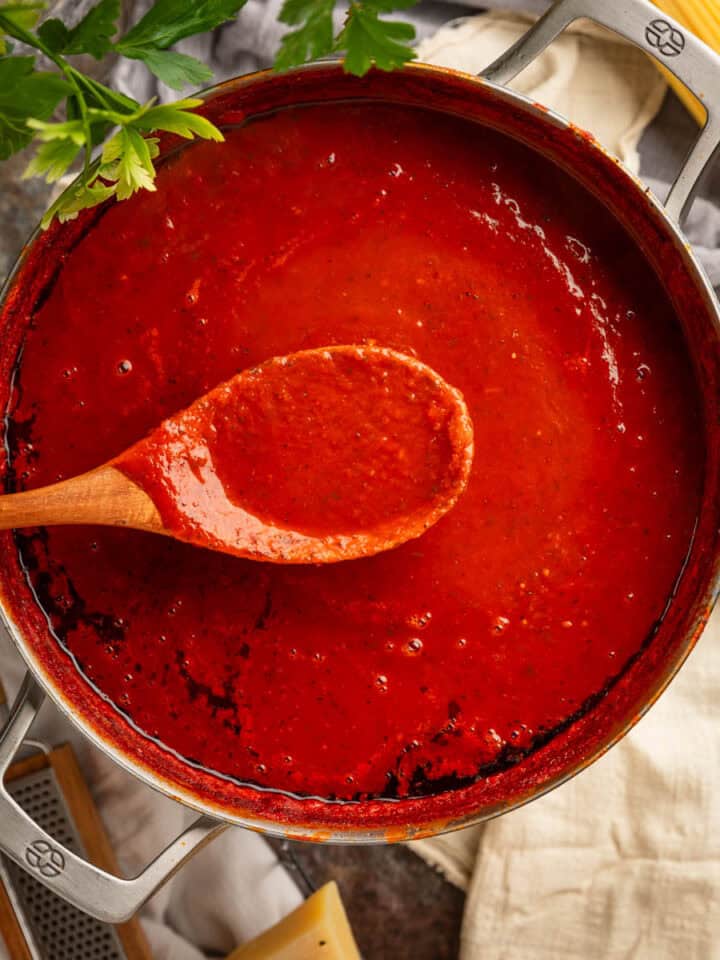
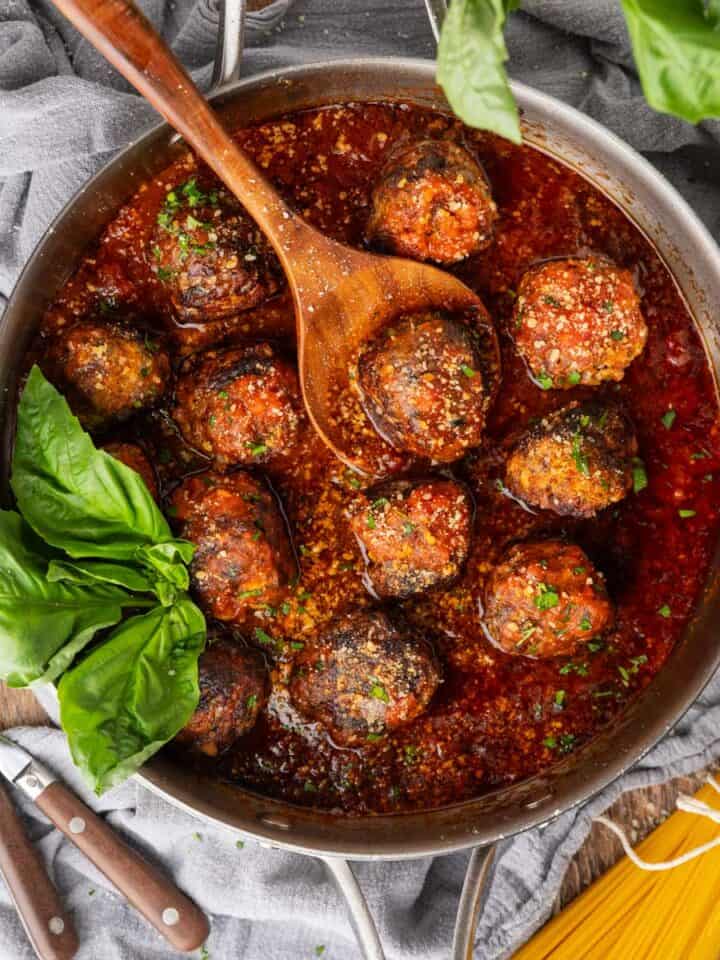
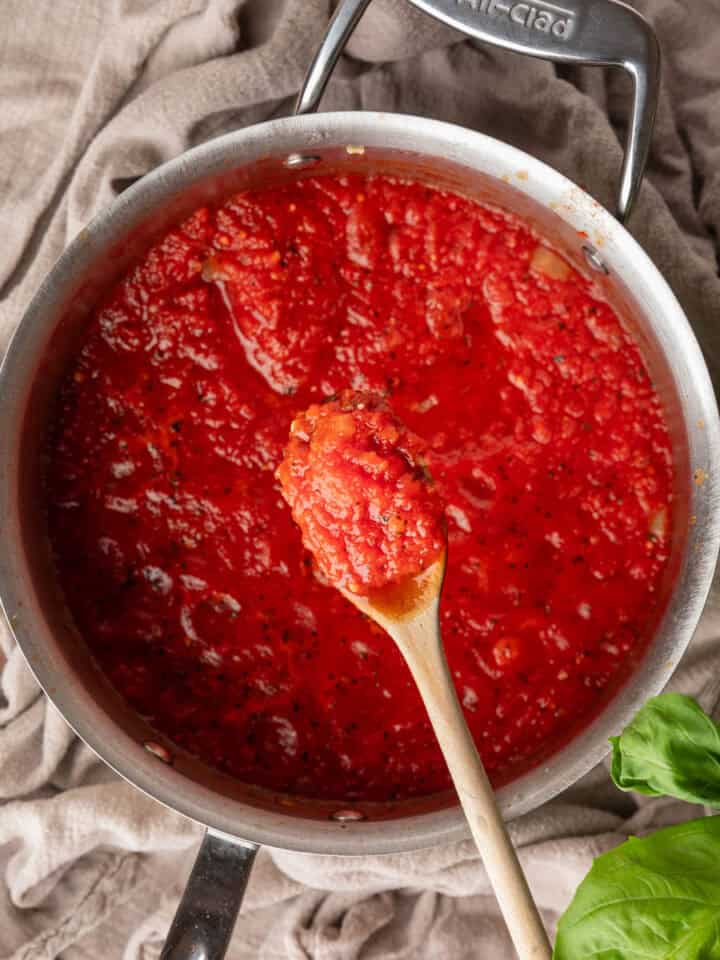
JoeW
Those are some of the best pictures of stock making that I've seen. Thank you for sharing.
Regards,
Joe
Amanda
Thanks Joe! I really appreciate your kinds words and I hope you find the post helpful 🙂